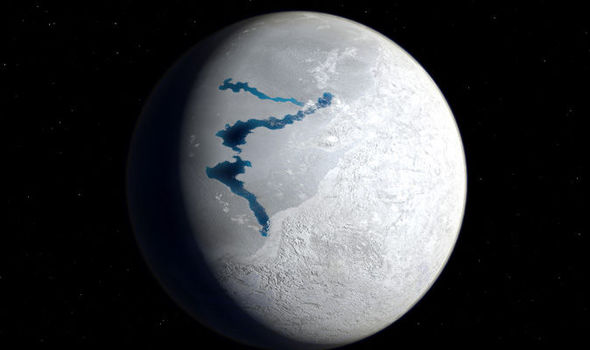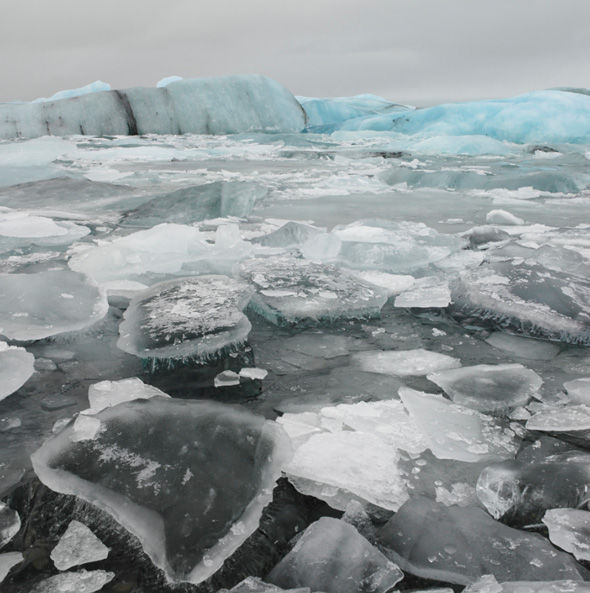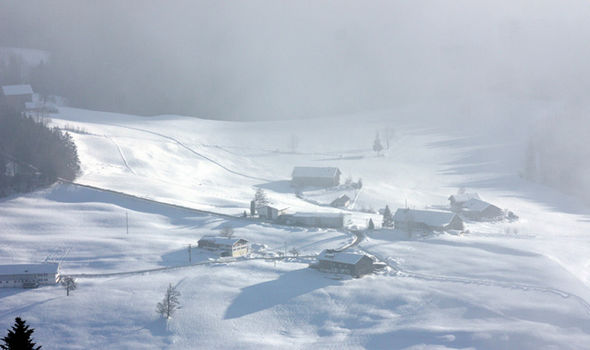Global Cooling: Decade Long Ice Age Predicted As Sun 'Hibernates'
SCIENTISTS claim we are in for a decade-long freeze as the sun slows down solar activity by up to 60 per cent.
By Jon Austin
Express.co.uk

The big freeze could last a decade as sun goes to
sleep
A team of European researchers have unveiled a scientific model showing that the Earth is likely to experience a “mini ice age” from 2030 to 2040 as a result of decreased solar activity.
Their findings will infuriate environmental campaigners who argue by 2030 we could be facing increased sea levels and flooding due to glacial melt at the poles.
However, at the National Astronomy Meeting in Wales, Northumbria University professor Valentina Zharkova said fluctuations an 11-year cycle of solar activity the sun goes through would be responsible for a freeze, the like of which has not been experienced since the 1600s.
From 1645 to 1715 global temperatures dropped due to low solar activity so much that the planet experienced a 70-year ice age known as Maunder Minimum which saw the River Thames in London completely frozen.

The researchers have now developed a "double dynamo "model that can better predict when the next freeze will be.
Based on current cycles, they predict solar activity dwindling for ten years from 2030.
Professor Zharkova said two magnetic waves will cancel each other out in about 2030, leading to a drop in sun spots and solar flares of about 60 per cent.
Sunspots are dark concentrations of magnetic field flux on the surface that reduce surface temperature in that area, while solar flares are burst of radiation and solar energy that fire out across the solar system, but the Earth's atmosphere protects us from the otherwise devastating effects.
She said: "In cycle 26, the two waves exactly mirror each other, peaking at the same time but in opposite hemispheres of the Sun.
"We predict that this will lead to the properties of a ‘Maunder minimum.
“Over the cycle, the waves fluctuate between the Sun’s northern and southern hemispheres. Combining both waves together and comparing to real data for the current solar cycle, we found that our predictions showed an accuracy of 97 per cent."
Research colleagues Simon Shepherd of Bradford University, Helen Popova of Lomonosov Moscow State University and Sergei Zarkhov of the University of Hull used magnetic field observations from 1976 to 2008 at the Wilcox Solar Observatory at Stanford University.
A Royal Astronomical Society spokesman said: "It is 172 years since a scientist first spotted that the Sun’s activity varies over a cycle lasting around 10 to 12 years.
 GETTY
GETTY
"But every cycle is a little different and none of the models of causes to date have fully explained fluctuations."
The “double dynamo” theory appears to support claims of researchers who argue Earth will soon experience major global cooling due to lower solar activity as the sun goes into a sustained period of hibernation.
Environmentalists meanwhile claim global temperatures will increase over the period unless we drastically reduce carbon emissions.

